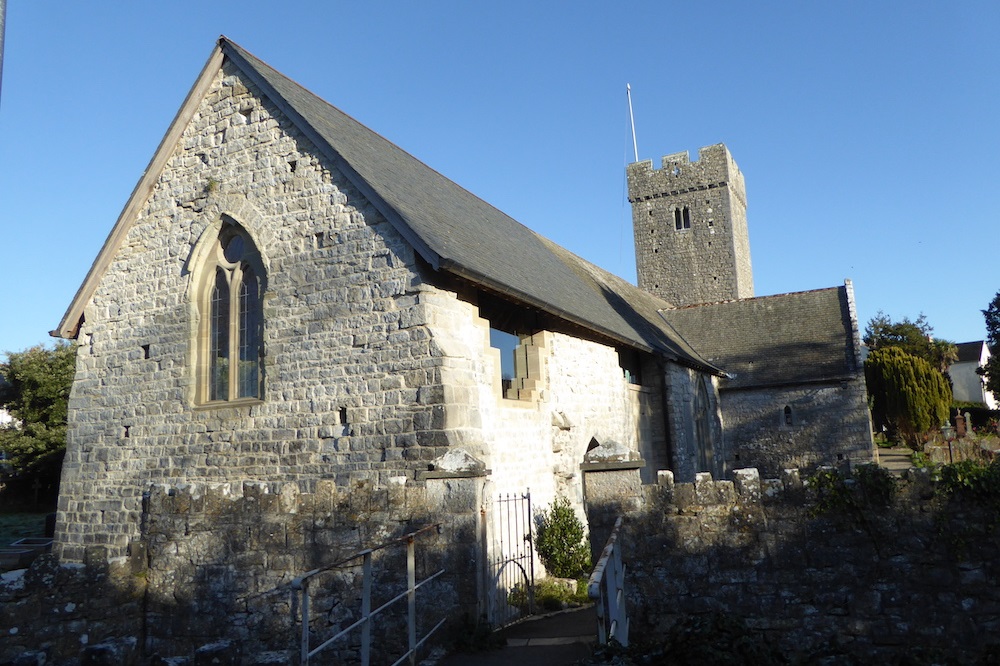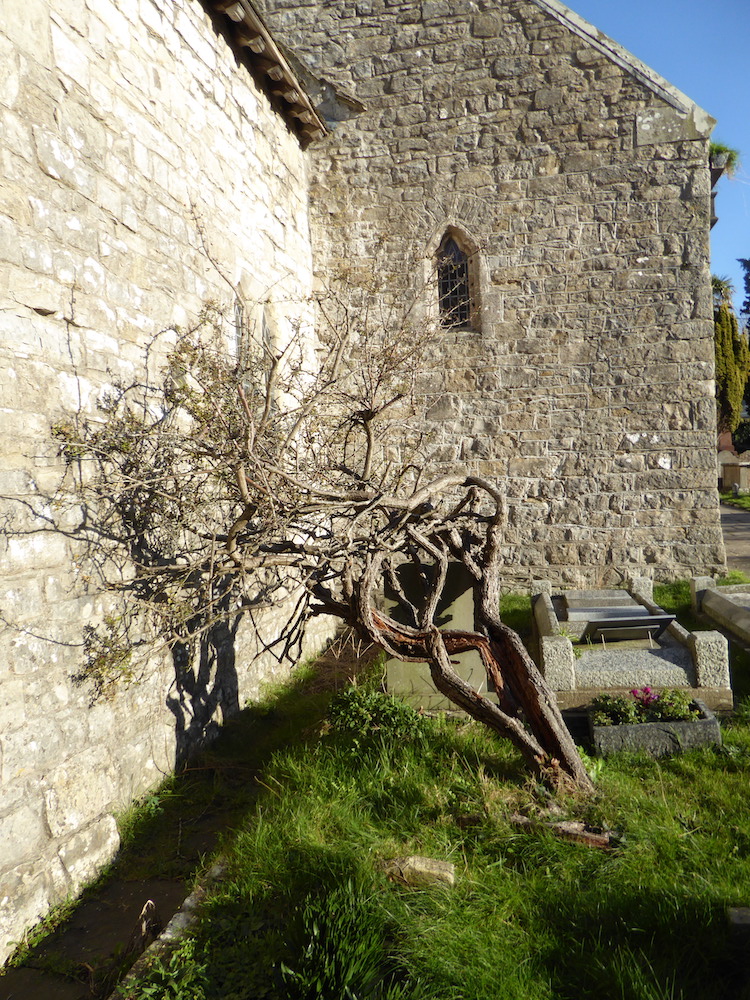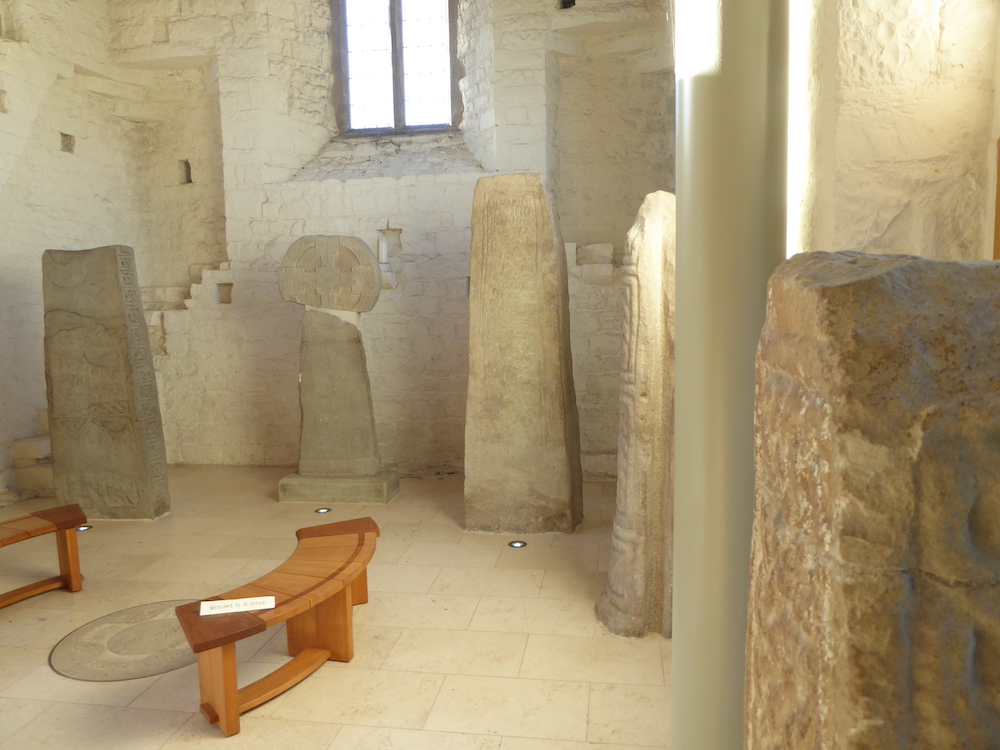Letter from Llanilltud Fawr

Jonah Jones
Apart from some grievously dull Sunday evenings, Llanilltud Fawr – Llantwit Major – in the Vale of Glamorgan has been in continuous occupation since the Bronze Age and possibly longer, therefore you stand a good chance of tripping over a piece of history around here.
Such as the character from the Dark Ages who was dug up last year a few yards downstream from the Eleventh Century Church. Roughly estimated as Seventh Century, that body had been lying around next to the Ogney Brook from a time before the stone church was built.
The reckoning is that the original church and associated college founded by Illtud, was late Fifth or early Sixth Century.
Therefore that Dark Age local walked around the place after the first church and college were built and before the modern church – the one that’s only a thousand years old – was set in stone.
This is a town of stones, bones and holy ghosts.

Sanctuary
Above the main town we have the remnants of a Roman Villa, which would be second to fourth – I mean CC to CD Century, providing food for the settlements at Cardiff and Caerleon.
It was evidently of some status, in that various parts of it were constructed in Bath stone (pillaged by the Museum of Wales and kept therein) which must have been a lot of bother to get from over by there.
It’s called Caer Mead (Castle Meadow) which is neither one thing nor another and furthermore isn’t sure what language it’s supposed to be. I dare say it was originally called Meus Locus or Having Completed One’s Peregrinations.
If you want older still, there’s an Iron Age fort above the entrance to the inlet and they’ve found odds and sods of Bronze Age clobber lying around the place.
There doesn’t seem to be any direct evidence of the Neanderthals in the area but even today someone of challenged intellect drops litter on the beach.
Here was warm, fertile soil, protected by hills to the north and the motherly Severn Sea curling around the south.
Next to this Highway of the Celtic saints, Illtud and his people built a sanctuary – a place to provide nourishment for the triquetra of soul, body and mind so that the pilgrims might travel with greater ease on their journey.
Here they grew their crops, taught in their college and prayed in their church. This was once a truly holy enclosure and one of the first places of learning founded in Europe.
Ghosts
There are layers of time as there are layers in the soil, in the cliffs, in the mind. Dig a little, scrape at this fertile soil and as each complication of history is cleared, you may find traces of that sanctity set into this place.
Perhaps you’ll give a few more ghosts the chance to walk their ways as they did so long ago.
Travel back in time through the new estates, the railway and Co-op, then further back through the Tudor and the medieval, past the Norman and into the Dark Ages where you may meet Illtud and those who were taught in his college; Samson, Dewi, Gildas and some would have it, King Arthur himself, who was both Illtud’s pupil and monarch.
The last time I met him up by the medieval dovecote he said “Who do you think you’re talking to? I’m a figment of the collective psyche.”
Always was more the intellectual than the warrior.
Speaking of such, Owain Glyndŵr occasionally struts through the town. Freedom-fighter be stuffed, the sanctimonious git set fire to The Old Swan. I can still smell it when I go for a pint. What sort of way is that for a Prince of Wales to behave?

Twayblade
Although this was the cradle of the saints, it was itself cradled by these dangerous seas with which the Celtic mariners wrestled. Here is the second largest tidal shift in the world, flanked by these dangerous cliffs and flowing over shifting shoals.
This was a highway and a place of murder where pirates roamed and monster-filled seas swirled. None but the brave ventured to this ancient wound in the stony cliffs, hard cut through by the twayblade of the Ogney and Boverton Brooks in their confluence.
Are you able to fly? If so, you will easily see that this is the only safe place to land between the Ogwr and the Thaw rivers; a safe haven for body and soul on the way to the College.
Or perhaps you have the skill to sail a leather-skinned boat, then you will understand even more keenly how this break in the cliffs might have been such a joy to behold as your course was twisted by the capricious tide.
This is an easy place to integrate with the past. Walk up the stream and discover the church where the college once stood, still stands, if you have but the eyes to see it. These things go in streams that twist around each other but never define an ending.
His pupil Samson wrote that, amongst many talents, Illtud could see into the future. I wonder what he thinks of this place where he founded his college, as it moves on, century after century.
The old teacher never replies whenever I ask.
He doesn’t like talking to ghosts.
Support our Nation today
For the price of a cup of coffee a month you can help us create an independent, not-for-profit, national news service for the people of Wales, by the people of Wales.





If the saint’s name was Illtud where did “twit” come from? I think this error needs correcting as it’s quite disrespectful of the saint. Probably the Sais could not pronounce Illtud so in their usual ignorance they called him “Twit”.
They are all sais in posh places in Wales. Even spoons is posh in Cymru.
I enjoyed reading that Jonah, More would be lovely. Hope you’re well.